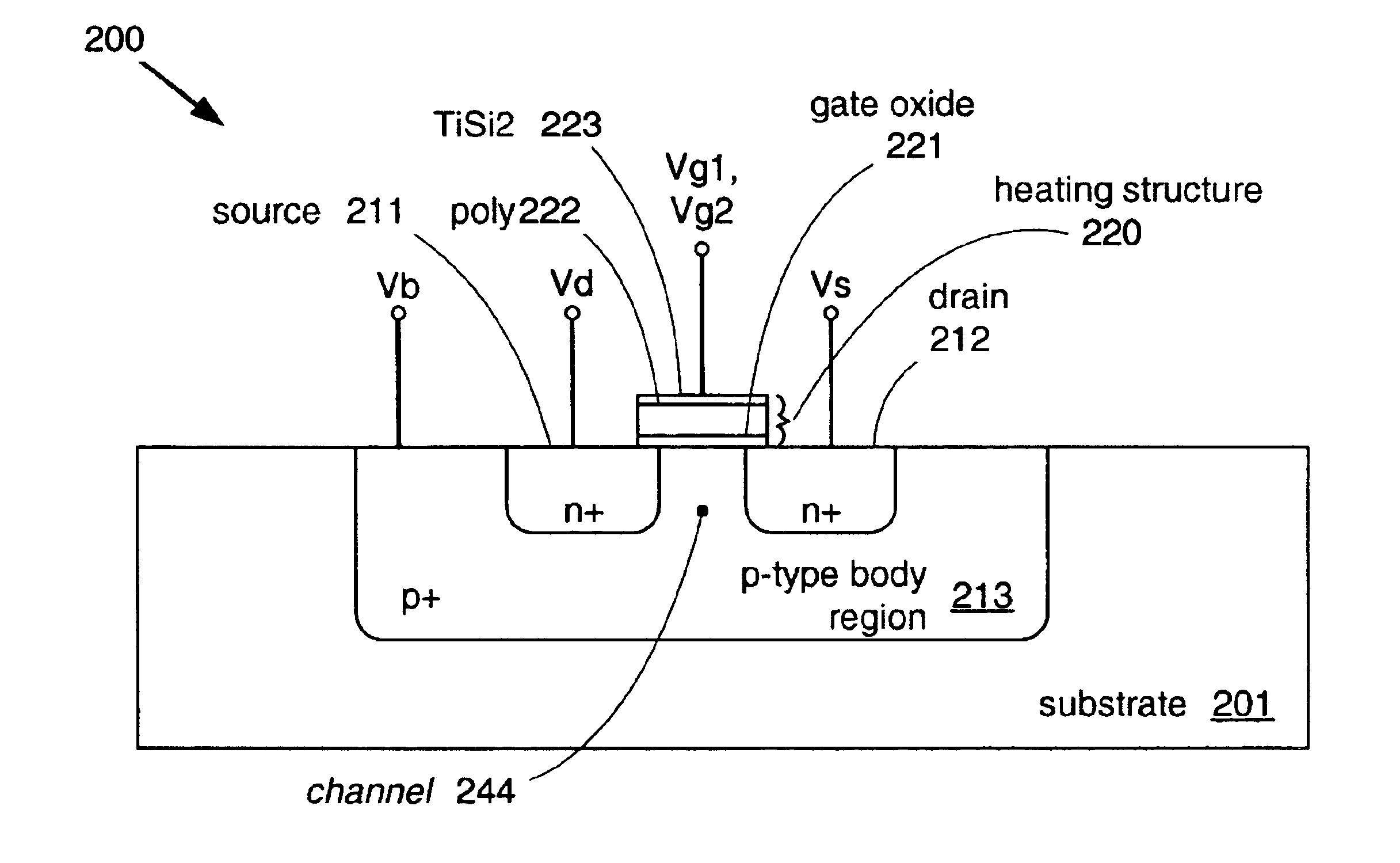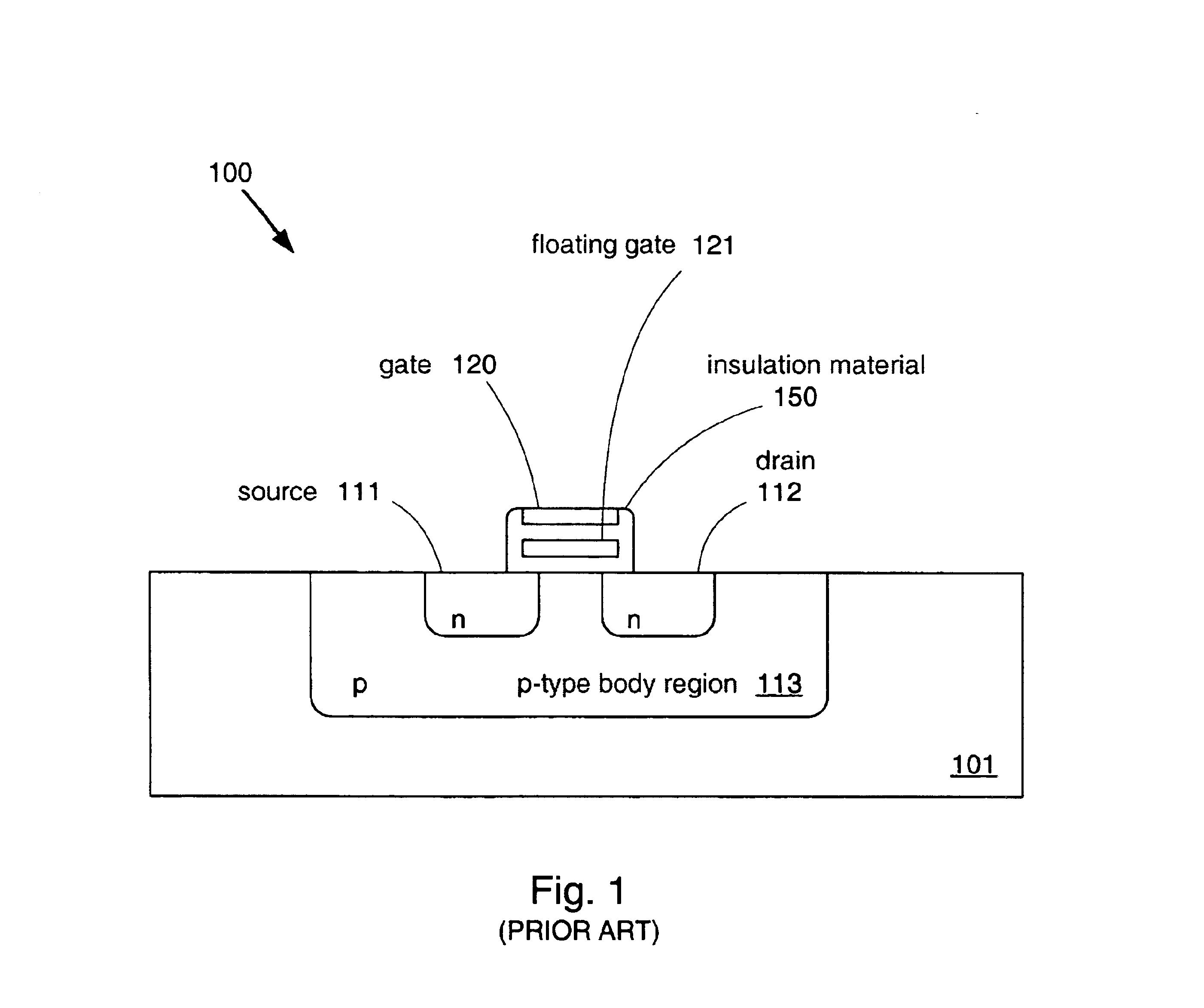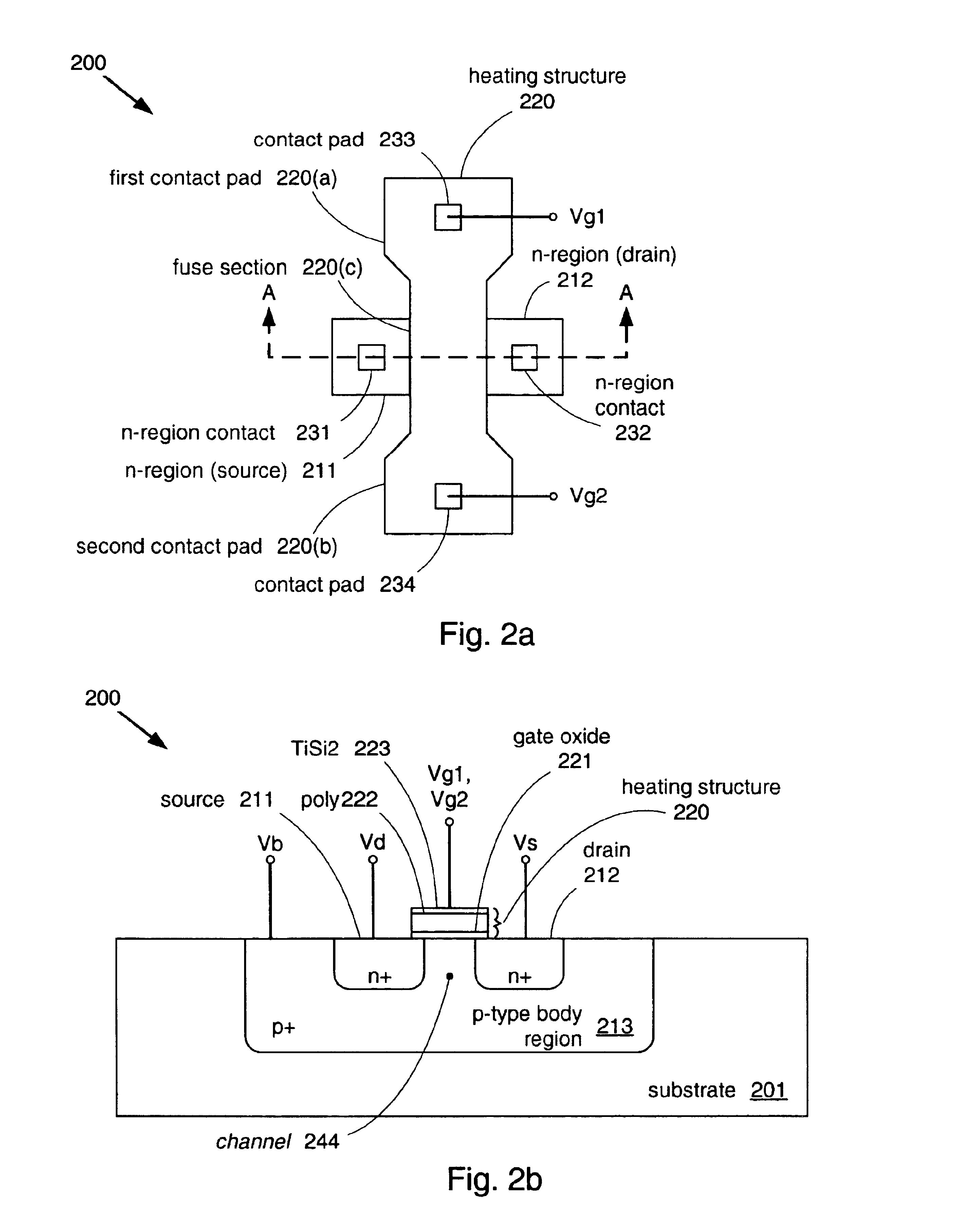Low voltage non-volatile memory cell
- Summary
- Abstract
- Description
- Claims
- Application Information
AI Technical Summary
Benefits of technology
Problems solved by technology
Method used
Image
Examples
Embodiment Construction
[0022]As is known in the art, the mobility of carrier atoms (i.e. atoms providing the free electrons or holes) in a semiconductor material is enhanced by increasing temperature. However, this mobility can be problematic for conventional semiconductor devices. For example, the channel region for an NMOS transistor is often a boron-doped region of a silicon wafer between n-type source and drain regions. The excess of holes (i.e. positive free charge carriers) provided by the boron atoms can impede current flow between the source and drain regions until a gate voltage draws enough negative free charge carriers (i.e. electrons) into the channel region. A consistent boron distribution across the channel region is therefore required for proper transistor function. However, the high-temperature anneal processes commonly used in IC manufacturing process steps can cause segregation of the boron atoms in the channel region towards the source and drain regions, thereby reducing the semiconduct...
PUM
 Login to View More
Login to View More Abstract
Description
Claims
Application Information
 Login to View More
Login to View More - R&D
- Intellectual Property
- Life Sciences
- Materials
- Tech Scout
- Unparalleled Data Quality
- Higher Quality Content
- 60% Fewer Hallucinations
Browse by: Latest US Patents, China's latest patents, Technical Efficacy Thesaurus, Application Domain, Technology Topic, Popular Technical Reports.
© 2025 PatSnap. All rights reserved.Legal|Privacy policy|Modern Slavery Act Transparency Statement|Sitemap|About US| Contact US: help@patsnap.com



